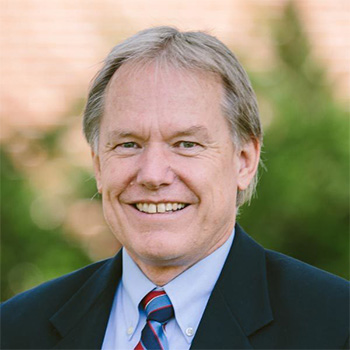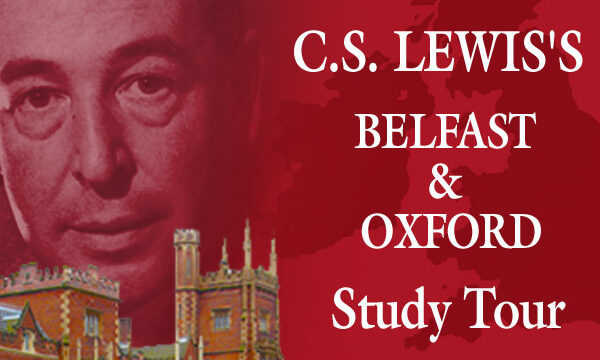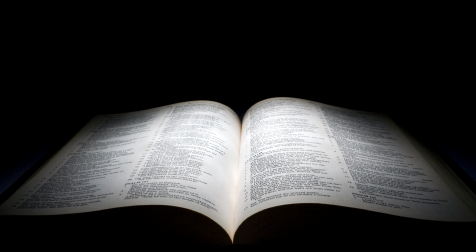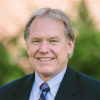Back to series
Exploring the Nature of the Collision
Perhaps the Bible Is Right After All
The Activity of Evil Spirits
The Work of Satan at a Macro Level
Discerning the Demonic
Engaging in “Spiritual Warfare”
What Does the Future Hold?



A Collision of Worlds
Click here to open a Print - Friendly PDF
In the ancient world, if someone complained of hearing voices in their head or became suddenly and inexplicably ill, the diagnosis was quite easy: the person was possessed by an evil spirit. A folk healer was needed who knew the proper incantations, rituals, and formulas for dealing with this kind of spirit.
The explanatory power of personal evil also worked on a larger scale. If a city or village was losing people to a plague, it was often concluded that the village must be under a curse. The solution was for a powerful shaman to be called in to avert the spirits responsible for the devastation.
Today we know better. Voices in the head are a common phenomenon that can be explained in a variety of ways ranging from a neurological disorder (such as schizophrenia) to a psychological condition (such as dissociation or post-traumatic stress disorder). Meteoric advances in science in the past three centuries have moved beyond these simplistic and primitive ways of evaluating life’s issues.
The same can be said about evil experienced at a much larger scale. Most historians appeal to sociological and psychological factors to explain the horrific scale of evil perpetrated by figures like Adolf Hitler or the Khmer Rouge leader, Pol Pot. We also now know that an earthquake is not an expression of anger from a disgruntled god or a powerful demon; it is simply a natural geological phenomenon. Pressure builds up in massive underground tectonic plates, which sometimes slip, resulting in seismic activity.
Consequently, many people today consider a belief in a literal Satan flanked by hosts of demons to be on the same par as believing in Santa Claus, a flat earth, and the tooth fairy. And this is precisely where the difficulty surfaces for Christians. From the satanic serpent in the garden of Eden to the banishment of the devil into the lake of fire, the Bible speaks about personified evil from beginning to end.
To make matters more complicated, the demonic interpretation of life did not decline from the Old Testament to the New Testament, but rather intensified. Jesus had many encounters with demonically afflicted people, and the Apostle Paul cast spirits out of the oppressed as part of his ministry as he took the Gospel to the Gentile world. In fact, Paul even defined our present struggle in terms of a conflict with evil spirits. He declared,
For our struggle is not against flesh and blood, but against the rulers, against the authorities, against the powers of this dark world and against the spiritual forces of evil in the heavenly realms (Ephesians 6:12).
How does this square with a modern scientific worldview? Is this one area where Christians need to admit that biblical teaching is out of sync with reality as we know it today?
Exploring the Nature of the Collision
Many Christians have recognized this apparent conflict and have tried to overcome it. The celebrated scholar Rudolf Bultmann, no doubt inspired by the example of Copernicus, allowed modern science to trump biblical teaching. He argued that the Bible was hopelessly constrained by a pre-scientific and obsolete view of the world. His now famous judgment—“now that the forces and the laws of nature have been discovered, we can no longer believe in spirits, whether good or evil”1—has been oft repeated by scholars. He suggested that biblical scholars identify and eradicate every relic of primitive worldview and mythology embedded in scripture—a process he called “demythologization.”
More recently, some scholars have argued that this approach is too radical and causes us to lose some of the valuable and important insights that the Bible provides. Still controlled by the a priori belief that such spirits do not exist, they argue for a reinterpretation of the language of spirits and powers. Some run the language through a Jungian psychological grid and interpret the statements about demons as projections of the inner self, that is, the interior spirituality of a person or even a social institution. Still others see the terminology of Satan and demons as political code language and read it as referring to the political powers in ancient Israel, such as the Pharisees or the Roman imperium.
But is there really a conflict between the Bible and science on this issue? I would argue that there is not.2 Just as it is beyond the scope of science to determine the ultimate question of whether God exists, so science cannot adjudicate the question of whether the Holy Spirit, angels, or evil spirits exist. Certainly science has performed a valuable role in helping us better understand certain phenomena that were formerly interpreted as demonic activity. But science cannot rule out potential spirit involvement on every issue. In other words, voices in one’s head cannot always and invariably be explained by the phenomena of dissociation, chemical imbalance, or psychological disorders. The international community of mental health professionals recognizes this and includes a diagnostic category called “Trance and Possession Disorder,” as seen in the World Health Organization’s standard diagnostic manual (the ICD-10).3
 Purely sociological and psychological factors may help us understand someone like Hitler to a certain extent, but such an understanding does not rule out the possibility of spiritual involvement in his life. In other words, is it still possible that a supernatural intelligence was also working behind the scenes enticing, planting ideas, and inspiring the mind of the leader of such extraordinary atrocity?
Purely sociological and psychological factors may help us understand someone like Hitler to a certain extent, but such an understanding does not rule out the possibility of spiritual involvement in his life. In other words, is it still possible that a supernatural intelligence was also working behind the scenes enticing, planting ideas, and inspiring the mind of the leader of such extraordinary atrocity?
Finally, we surely need to ask ourselves whether it could be slightly myopic (dare I say, even arrogant) to ignore the fact that most cultures of the world grant a prominent role to spirits in their world views. Throughout Asia, Africa, the Pacific Islands, and elsewhere in the non-Western world, the belief in evil spirits continues to be an integral part of the world view of many people groups. Historically, we are, in fact, the anomaly. The last 300 years in the West represent the only time in human history when the existence of evil spirits has been treated with wide-spread skepticism.
Perhaps the Bible Is Right After All
Maybe we have constructed a false dichotomy between science and religion and should instead give our attention to developing a proper integration. This reflects my own conviction on the issue.
We need to begin by properly understanding what the Bible says about spirits and work to eliminate the false impressions we have in our minds that may have had their origins in movies like The Exorcist or Disney films like Fantasia. It is crucial for Christians to develop a strong biblical theology of Satan, demons, and principalities and powers.
Once we have done this, we have the proper basis for an appropriate biblical integration with sociology, psychology, medicine, and all other relevant disciplines regarding the role of evil spirits.
What Are Evil Spirits?
The Bible never explicitly addresses the origin of evil spirits or their ruler, Satan. Possible insights into the original state and fall of Satan, and many angelic beings with him, may be couched in the prophecies against the king of Tyre (Ezek. 28) and the king of Babylon (Isa. 14). This was how early Jewish interpreters (as well as early Christian interpreters) understood these two passages. The biblical writers are far more concerned about the fact of his existence (and the host of evil spirits associated with him) than with speculations about how he rebelled against God. There is also a unanimous opinion among the biblical writers that Satan is not an equal with God. While Satan and his forces oppose God, there is never a hint he could possibly win. The end is certain: God is sovereign.
Nearly everyone living in the Mediterranean world during the Old and New Testament eras would have believed in the real existence of good and evil spirits. In the first century, the Jews, Greeks, Romans, Anatolians, and Egyptians all believed spirits populated the heavens, the underworld, and the earth. Rather than questioning the existence of this realm, people sought ways to control the spirits and to protect themselves from the sometimes dreadful workings of these spirits through ritual means (magic). Most people, regardless of religious background (even Jews), found the practice of magic helpful.
It was in this kind of environment that Jesus ministered and the early church came into existence. Jesus and the early Christian writers shared a basic belief in the reality of this realm, but with some important modifications. They believed there was only one true God, the God of Israel. They believed that the “gods” of pagan religion were really the manifestation and working of demons, opponents of the one true God working a deceptive influence. They believed that these evil spirits were organized under the leadership of the one prime adversary—Satan. Further, the early Christians believed that the practice of magic, witchcraft, and sorcery—so popular among the common people—represented the pure work of Satan and his forces of evil.
Both the Old and the New Testaments assume some kind of hierarchy within the realm of the hostile supernatural powers. But they never give any delineation of the chain of command. Satan is “the ruler of the kingdom of the air” (Eph. 2:2), and he has within his sphere of authority a vast assembly of powers, dominions, thrones, angels, world rulers, demons, unclean spirits, and elemental spirits. While some contemporary Christian authors have attempted to speculate on the relative authority of each group, it remains speculation. It is better to work with the concept of the evil spirit and recognize that there appears to be a range of both abilities and functions among the totality of evil spirits.
The scriptures portray evil spirits as sometimes influencing people to the extent of “entering” them. For instance, John tells us that Satan “entered into” Judas in order to betray Jesus (John 13:27). The account of the Gerasene demoniac (Mark 5:1-20) demonstrates that a person can be afflicted by more than one evil spirit at a time, perhaps even hundreds; when Jesus asked this man his name, he replied, “My name is Legion, for we are many.” Normally a Roman military legion consisted of 5,000 men. All of the exorcism stories of the Gospels and Acts also vividly illustrate that evil spirits are intelligent and are capable of exercising will. They frequently talk to Jesus, usually expressing their fear, by speaking through their victim’s vocal apparatus. Satan, of course, is usually depicted as a clever strategist constantly plotting against the purposes of God.
The Activity of Evil Spirits
The best way of summarizing the activity of evil spirits is by stating that they do everything that God does not; they stand for everything that is contrary to God’s purposes and his people. Whereas God creates life, the forces of darkness are bent on destroying life; Jesus claimed that the devil was “a murderer from the beginning” (John 8:44). Whereas God is holy and seeks virtue in his people, Satan’s hosts are evil and seek to promote every imaginable vice.
Evil powers work on every level—from influencing individuals to exerting control over the social order. Since his success with Adam and Eve in the garden, the classic activity of Satan and his powers is the activity of enticing individuals to act in ways contrary to the revealed will of God. This has garnered him the title of “tempter” (1 Thess. 3:5). While the Bible does not describe in a precise way how Satan tempts people, it appears that he does so through exploiting each person’s inner tendency toward evil (what Paul calls “the flesh”). By doing so, the devil expects to enslave people to his dominion, keeping them apart from the kingdom of God (Eph. 2:1-2).
Part of his method entails the use of deceit. In John’s gospel, Jesus says, “when [Satan] lies, he speaks his native language, for he is a liar and the father of lies” (John 8:44; see Rev. 20:10). Satan can influence what people believe to be true about themselves and God.
Through temptation, deceit, and a variety of other methods, “the god of this age” tries to blind unbelievers from discovering the good news of Christ’s redeeming work on the cross (2 Cor. 4:4). He uses the same strategies against Christians in an effort to re-enslave them (Gal. 4:8-9).
Some people, however, have been victimized to such an extent that an evil spirit (or group of spirits) may exercise an exceptionally high level of control over their lives. The Gospels and Acts refer to these people as “demonized,” deeply influenced by evil spirits. Jesus and his disciples engaged in spiritual intervention for such people, through which the spirits were “cast out.” The New Testament epistles, however, stress the need for believers to draw on their close relationship with Christ and the power of his Spirit as the primary means for resisting the influence of evil spirits.
The Work of Satan at a Macro Level
The Bible speaks of the work of evil spirits as extending even to entire nations. The book of Daniel reveals that evil spirits were assigned both to Persia and Greece (Dan. 10:13, 21). While the New Testament does not elaborate on this idea, it does use the same terminology for evil spirits (e.g. arch?n) and refers to the devil as “the prince of this world” (John 12:31; 14:30; 16:11) and “the god of this age” (2 Cor. 4:4). Satan and his forces do attempt to exert their influence on the social, economic, political, and even religious order.
Many of the New Testament writers often use the term “world” in a moral sense. Paul, for instance, frequently uses “world” (and the idea of “this age”) as the totality of people, social systems, values, and traditions, in opposition to God and his redemptive purposes. This is what he has in mind when he speaks of “the present evil age” (Gal. 1:4). Working primarily through key people, evil powers strive to pollute society in their larger effort to lead humanity astray from God.
For example, Satan can oppress a whole country by focusing his supernatural influence on one holding absolute power. Reinforcing thoughts of greed, suspicion, and hate, a ruler can reign tyrannically over a country for years.
In the Old Testament, false gods and pagan cults were frequently used by evil spirits to cause the people of God to turn their backs on him. This is why there is such strong anti-idolatry polemic throughout the Old Testament. In describing Israel’s abandonment of God for idols while in the wilderness, the book of Deuteronomy represents the Jewish conviction that pagan religion had a close connection with the work of demons: “They [the Jewish people] made him jealous with their foreign gods and angered him with their detestable idols.
They sacrificed to demons, which are not God—gods they had not known, gods that recently appeared, gods your fathers did not fear” (Deut. 32:16-17). The Apostle Paul was also convinced that the powers of darkness were especially active in non-Christian religions. He sternly warns the Corinthians to avoid participation in pagan sacrifices because of this. He contends, “The sacrifices of pagans are offered to demons, not to God, and I do not want you to be participants with demons” (1 Cor. 10:19-20). It is thus perfectly clear why Paul urged the Corinthians to “flee from idolatry” (1 Cor. 10:14). By maintaining any kind of involvement with pagan temples, the Corinthians were exposing themselves to powerful demonic activity and compromising their allegiance to the one true God.
Throughout his ministry, the Apostle Paul struggled against perverted understandings of Christ and his atoning work that crept into the churches. Paul implies that the false teachings influencing the churches at Colossae and Corinth were demonically inspired (2 Cor. 10:4; 6:14-17; Col. 2:8).
What Did the Cross Accomplish?
The New Testament clearly teaches that Jesus’ cross, resurrection, and exaltation marked the decisive victory of Jesus over Satan and the powers of darkness (Eph. 1:20-22; Phil. 2:9-11; Col. 2:15; Heb. 2:14). 1 John expresses it succinctly: “The reason the Son of God appeared was to destroy the devil’s work” (1 John 3:8).
The first three Gospels record the teaching of Jesus himself on the significance of the cross with respect to the powers of evil. He expresses himself in the form of a parable: “No one can enter a strong man’s house and carry off his possessions unless he first ties up the strong man. Then he can rob his house” (Mark 3:27; see also Matt. 12:29, Luke 11:21-22). Satan is the “strong man” and “his possessions” are the people held in bondage to his kingdom
Jesus has come to “tie up” this strong man so he can plunder his house by liberating the prisoners (see Luke 4:18-29), that is, people enslaved to sin and trapped in the bondage and oppression of the kingdom of Satan. Jesus’ many exorcisms clearly demonstrate his power over the strong man, but it was only through the cross that Satan and his hosts were dealt the unrecoverable blow that spells their final doom. The strong man was defeated, and Christ could now build his church.
Nowhere else in the New Testament is Christ’s victory over the powers of darkness given fuller expression than in Colossians 2:15. Paul proclaims, “And having disarmed the powers and authorities, he made a public spectacle of them, triumphing over them by the cross.” Having sought to frustrate the redemptive plan of God by instigating the death of Christ on the cross, the powers of darkness unwittingly became mere instruments in God’s hands. Christ rose from the dead and assumed the position of “head” over a new body—a body of people in union with himself who would now spread the message of redemption all over the world.
Nevertheless, the forces of evil continue their hostile activity. The cross represents the major victory of the war, but the battle continues (like D Day compares to VE Day in World War II). There is a vital difference, however, between the time before the cross and after, between unbelievers and believers. Evil powers have indeed been “disarmed” with respect to believers. By virtue of Christ’s victory on the cross over evil powers and our identification with him, believers share in his present power and authority over evil powers.
Are Believers Immune to Demonic Influence?
The New Testament teaching is clear that becoming a Christian does not bring about automatic immunity to the influence of evil spirits. Becoming a Christian links one to a new resource for dealing with these hostile forces. Jesus teaches his disciples the possibility and necessity of “abiding” in him, like a branch in a vine, in order to be infused with his divine enabling power (John 15:1-8).
In a similar fashion, Paul constantly affirms our identity as being “in Christ.” Through this real union with Christ believers can draw on divine resources provided by Christ—the head of the body who empowers the body and enables it to resist Satan and fulfill its mission in spite of intense demonic hostility. Christ as the head is able to accomplish this because God has exalted him and placed all of the evil demonic powers under his feet (Eph. 1:22).
Evil spirits are thus weakened in their ability to influence Christians only insofar as believers realize their position in Christ and draw on the divine power and authority over this realm that is theirs in Christ. Paul wanted believers to regard themselves as so closely united with Christ that they considered themselves as having died with him on the cross and having been raised with him to an exalted position, “far above” every rank in the hierarchy of evil spirits (Eph. 2:5-6; 1:19-22). Just as Christ holds a position of superiority to the powers, so too believers have a position of superiority and authority over the forces of the devil. Paul tells the Colossians, while facing a demonically inspired opposition, “you have been given fullness in Christ, who is the head over every [demonic] power and authority” (Col. 2:10). Becoming a Christian means being linked to a powerful Lord who wields overpowering (“disarming”) authority over the realm of darkness.
Being a Christian does not guarantee victory over every demonic attempt at influence. The Apostle Paul envisions the real possibility of Christians “giving a place to the devil” in their lives (Eph. 4:27). Paul stresses that believers can resist Satan and make progress in their Christian lives only when they draw on the divine enabling power that God supplies (see also James 4:7 and 1 Peter 5:8-9).
Discerning the Demonic
How can a person detect the direct influence of Satan or an evil spirit, as opposed to a social influence or one’s own inner bent toward doing evil?
In the Gospels and Acts, it appears that Christ and the apostles had little trouble detecting the work of evil spirits in the lives of demonized people. Their physical conditions (sometimes unusual muscular strength, at other times physical debilitation and illness), bizarre behavior (like living among tombs), extreme reaction to Christ or to the use of his name and authority, or using a person’s vocal apparatus in direct response to Christ or one of his followers appear to have been foremost among the evidences.
Many would contend that the same evidences of intense demonic influence can be seen in certain people today. People involved in satanism and the occult open the door wide to this kind of severe demonic control; in most instances, such people specifically seek communion with demons and the prince of evil. It also appears from the evidence of scripture that those who persistently and willfully continue in certain patterns of sinfulness may experience increasing amounts of direct demonic influence.
While Satan may manifest himself in these ways, what I have just described is also the stereotype of satanic activity. Limiting our perception of his activity to these more severe and dramatic forms of his influence could hinder us from seeing the more subtle ways he operates. We need to be wary of too readily restricting the devil’s work exclusively to murderous satanic rituals, scenes similar to the The Exorcist, and occult activities. Satan and his spirits can influence even those who do not experience voices in their heads or roam graveyards.
The church has often ascribed the source of evil influence to “the world, the flesh, and the devil” which I believe accurately reflects the teaching of the Bible (especially Paul, John, and James). While Satan may often work in a direct and immediate way in people, he also asserts his sway more indirectly through exploiting “the world” and reinforcing the appetites of the flesh (our inclination toward evil). Thus we need to speak of varying levels of his influence.
First, we must remember that as “the prince of this world,” Satan attempts to exert his polluting influence on all aspects of societal life and culture. When biblical ethics are portrayed in a negative light in society, Satan has been successful in extending his evil influence on a broad scale. For instance, when pilfering from one’s employer can be rationalized, Satan has been victorious. When vengeance is regarded as the best course of action against a person who wrongs us, Satan has successfully twisted our moral conscience. In short, Satan can pervert societal morals, traditions, and customs.
Secondly, we need to realize that Satan works in concert with an individual’s inclination toward evil (“flesh”). If a person is naturally inclined toward anger and bitterness, in some way an evil spirit may directly encourage that attitude. If the malice continues and intensifies, the more direct the demonic involvement in the person’s life may become. This is what Paul would refer to as giving “turf” to the devil (Eph 4:27).
Engaging in “Spiritual Warfare”
Paul claims that all of us—not just a few involved in deliverance ministries—struggle against wicked spiritual forces of evil (Eph. 6:12). He urges us to recognize that the only way we can succeed in this struggle is by appropriating the power of God.
As Paul portrays it in Ephesians 6:10-20, spiritual warfare is primarily concerned with Christian conduct—not with exorcism or eradicating structural (institutional or societal) evil. It is practical instruction for the day-to-day lives of all Christians. Four times in the passage Paul uses the word “stand/withstand” (same root in Greek). This means that Paul does not want believers to “give a place to the devil” (Eph. 4:27) by lying, stealing, being excessively angry, or succumbing to any other temptation to moral impurity. Spiritual warfare is therefore resistance. It is a defensive posture. It involves recognizing the supernatural nature of temptation and being prepared to face it. It also implies appropriating the power of God to make progress in eradicating moral vices that already have a place in one’s life.
Spiritual warfare is not only defensive, it takes the offensive. Paul calls the soldiers of Christ to advance on enemy territory by proclaiming the gospel of peace. Many commentators have correctly observed that the only offensive weapon in the entire list of the armor of God is the sword: “the sword of the Spirit, which is the word of God” (Eph. 6:17). In a related sense, the footgear of the Christian needs to be “the readiness to announce the Good News of peace” (Eph. 6:15 GNB). A typical soldier would journey for miles as his army advanced to the battlefront, and would then pursue the enemy. According to Paul, the primary aggressive action the Christian is called to take in the world is to spread the gospel—the good news of salvation through the death and resurrection of Christ. John Stott notes that the gospel represents “God’s power to rescue people from [the devil’s] tyranny.” The whole course of Paul’s ministry is a model of this aggressive proclamation. The church should follow Paul’s lead.
If Paul were to summarize the primary way of gaining access to the power of God for waging successful spiritual warfare, he would unwaveringly affirm that it was prayer. On behalf of the Ephesian believers Paul asks God, “I pray that out of his glorious riches he may strengthen you with power through his Spirit in your inner being” (Eph. 3:16). Prayer is given much greater prominence in the spiritual warfare passage than any of the other implements. Prayer is closely related to faith and in many ways is the practical manifestation of faith.
The spiritual warfare passage is often viewed in individual terms, that is, each individual Christian should pray and ask God for strength to do battle. This is true, but it does not go far enough. Paul depicts the “arming” in corporate terms, with the whole church involved in the process. In fact, each believer is responsible for arming other believers. All of Paul’s admonitions in this passage are plural. More importantly, however, is the fact that Paul urges believers to pray “for all the saints” (Eph. 6:18). Paul, in fact, models this activity in his two prayers recorded in Ephesians 1 and 3. In essence, Paul prays that God would endow them with power so that they could successfully resist the temptations of Satan and be divinely enabled to proclaim the gospel fearlessly in spite of demonic hindrance and hostility.
Spiritual warfare, therefore, is more proactive than reactive. It is the preparation before the storm. It involves praying for individuals to resist temptation in their personal areas of vulnerability. It involves praying for the progress of the gospel, especially where there is localized and intense demonic opposition. It goes far beyond merely praying for the sick. This concept has the potential to rejuvenate prayer groups and prayer meetings in the church today—to unleash the power of God to accomplish great things.
What Does the Future Hold?
There is a message of hope for all who have come to know Christ. The grievous persistence of evil in the world, largely instigated by the devil and his powers, will soon meet its end. This will happen in spite of the fact that Satan will launch a powerful widespread rebellion against God just prior to Christ’s second coming (2 Thess. 2:1-12). Jesus promised to return “with great power and glory,” setting in motion a series of events that will include consigning the devil and all his angels to the torment of an eternal fire that is prepared for them (Matt. 25:41). The Apocalypse of John elaborates on this theme. The seer’s vision of the conclusion of the thousand-year reign of Christ includes an account of Satan’s doom. He will be thrown into a “lake of burning sulphur” (also called “the second death”) where he will face an eternal punishment (Rev. 20:10).
Paul also speaks of this future time when Christ will “destroy every rule and every authority and power” (1 Cor. 15:24). All of the evil spirits the church has struggled with throughout its existence will be finally and ultimately vanquished.
This vanquishing is still in the future. The church today is yet in the middle of the battle. God has given us access to his own power to be conquerors in every skirmish. It remains for us to discern the spiritual nature of our struggle as believers and to rely on the power of God. As God revealed to Elisha’s fearful servant the vast army of heavenly angels that fight for the people of God (2 Kings 6:17), perhaps it would be good for the contemporary church to have at least a momentary revelation of the opposite—the hordes of demonic spirits bent on its destruction. Perhaps we would take the spiritual nature of our struggle more seriously and, through prayer, appropriate the power of God to resist sin and proclaim our gospel of deliverance.
Notes
1. Rudolf Bultmann, “New Testament and Mythology,” Kerygma and Myth. A Theological Debate, vol. 1 (London: SPCK, 1964), 10.
2. See my essay, “Can We Still Believe in Demons,” in The Apologetics Study Bible (Nashville: Broadman & Holman, 2008), 1475.
3. See the International Statistical Classification of Diseases and Health Related Problems (Second Edition; World Health Organization, 2004).

Clinton E. Arnold
TheologianClinton E. Arnold is a New Testament theologian and author with a special interest in the historical and cultural setting of the letters of Paul and the Book of Acts. He is the former Dean of Talbot School of Theology at Biola University, and he presently serves on the translation oversight committee for the English Standard Version (ESV). Arnold received his M.Div. from Talbot Theological Seminary and his Ph.D. in New Testament Exegesis from the University of Aberdeen. He is the editor of the four-volume Zondervan Illustrated Bible Backgrounds Commentary for which he wrote commentaries on “Acts," "Ephesians” and “Colossians,” and most recently he completed the commentary on Colossians for the World Biblical Commentary series.

 COPYRIGHT: This publication is published by C.S. Lewis Institute; 8001 Braddock Road, Suite 301; Springfield, VA 22151. Portions of the publication may be reproduced for noncommercial, local church or ministry use without prior permission. Electronic copies of the PDF files may be duplicated and transmitted via e-mail for personal and church use. Articles may not be modified without prior written permission of the Institute. For questions, contact the Institute: 703.914.5602 or email us.
COPYRIGHT: This publication is published by C.S. Lewis Institute; 8001 Braddock Road, Suite 301; Springfield, VA 22151. Portions of the publication may be reproduced for noncommercial, local church or ministry use without prior permission. Electronic copies of the PDF files may be duplicated and transmitted via e-mail for personal and church use. Articles may not be modified without prior written permission of the Institute. For questions, contact the Institute: 703.914.5602 or email us.
-
Recent Podcasts
A Welcome Change in Apologetics
by Randy Newman, Aimee Riegert on April 19, 2024We’re burdened for our friends who don’t know...Read More
-
Questions That Matter Podcast – Samuel James and Digital Liturgies
by Samuel James, Randy Newman on April 19, 2024
-
The Side B Stories – Dr. James Tour’s story
by Jana Harmon, James Tour on April 12, 2024
-
Recent Publications
Isn’t Morality Relative?
by Christopher L. Reese on April 1, 2024It is widely accepted in the Western world...Read More
-
Do Muslims and Christians Worship the Same God?
by Andy Bannister on March 1, 2024
-
Artificial Intelligence and Its Impacts on Humanity
by John Lennox on February 13, 2024
0
All Booked
0.00
All Booked
0.00
All Booked
20599
GLOBAL EVENT: 2024 Study Tour of C.S. Lewis’s Belfast & Oxford
https://www.cslewisinstitute.org/?event=global-event-2023-study-tour-of-c-s-lewis-belfast-oxford-2&event_date=2024-06-22®=1
https://www.paypal.com/cgi-bin/webscr
2024-06-22

Next coming event
Days
Hours
Minutes
Seconds
GLOBAL EVENT: 2024 Study Tour of C.S. Lewis’s Belfast & Oxford
On June 22, 2024 at 12:00 pmat Belfast, Northern Ireland & Oxford, EnglandCategories
Speakers

Clinton E. Arnold
Theologian
Team Members

Clinton E. Arnold
TheologianClinton E. Arnold is a New Testament theologian and author with a special interest in the historical and cultural setting of the letters of Paul and the Book of Acts. He is the former Dean of Talbot School of Theology at Biola University, and he presently serves on the translation oversight committee for the English Standard Version (ESV). Arnold received his M.Div. from Talbot Theological Seminary and his Ph.D. in New Testament Exegesis from the University of Aberdeen. He is the editor of the four-volume Zondervan Illustrated Bible Backgrounds Commentary for which he wrote commentaries on “Acts," "Ephesians” and “Colossians,” and most recently he completed the commentary on Colossians for the World Biblical Commentary series.





